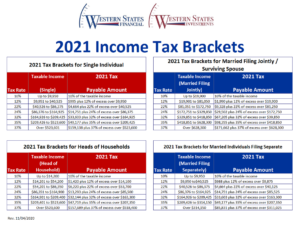
For much of our analysis, we combined the IRS’s AGI categories into eight larger groups, which made some underlying trends easier to see.
#FEDERAL SINGLE TAX BRACKETS 2021 PLUS#
In most cases the IRS breaks down its estimates into 18 groups by adjusted gross income, or AGI, plus a 19th group with no AGI. (The strata were defined not only by income, but also by such factors as the presence or absence of special forms or schedules.) IRS researchers then weighted the sample data for each stratum, or subpopulation, to reflect the total number of returns in it. The IRS data we used was derived from a stratified probability sample of all individual income tax returns filed in a given year. Nor did we attempt to quantify the relative incidence of state and local taxes, such as sales tax and property tax.) We concentrated most of our research on the individual income tax – the federal government’s single largest revenue source, and what most people tend to associate with “paying my taxes.” (That said, for millions of middle- and lower-income Americans, the payroll taxes that fund Social Security and Medicare take a bigger bite out of their gross income than income taxes do. It makes much of that data available through its Statistics of Income program. The IRS, by the nature of its mission, collects copious data on Americans’ financial lives.

With the 2023 tax season nearing its end, Pew Research Center analyzed IRS data to shed light on a poorly understood topic. The American tax system manages to combine ubiquity, complexity and opacity.


 0 kommentar(er)
0 kommentar(er)
